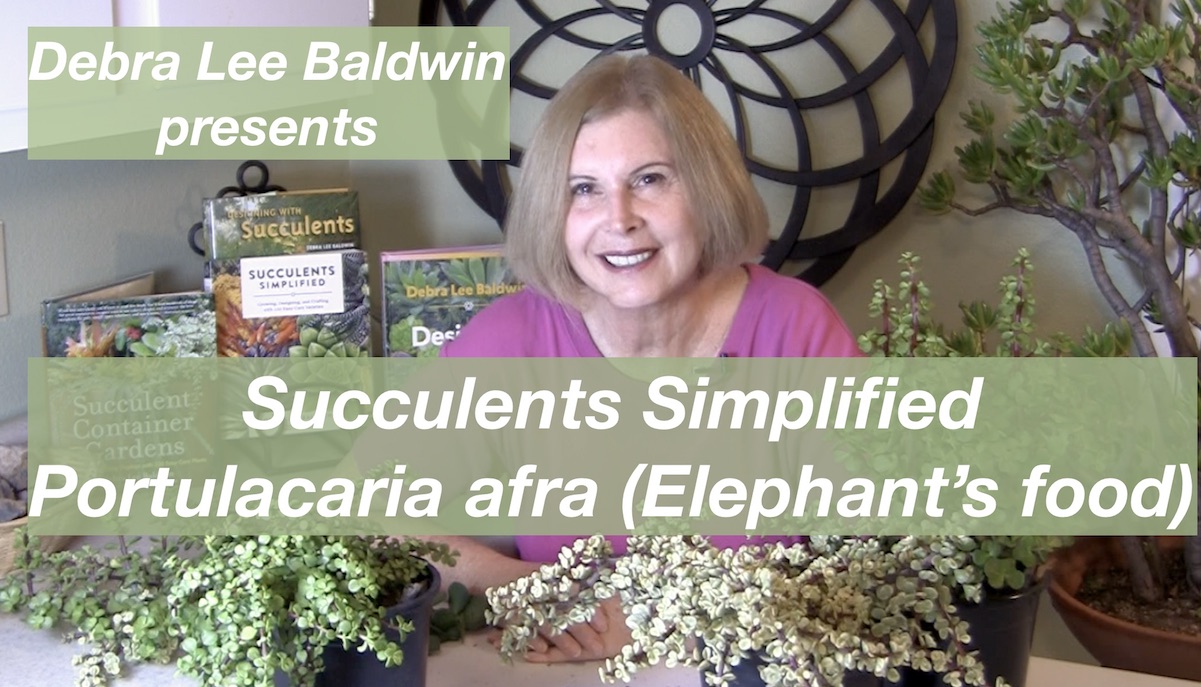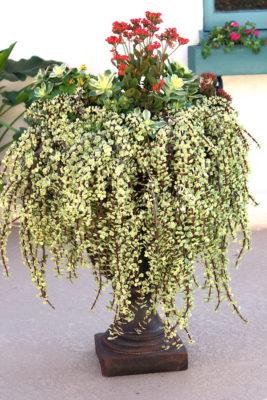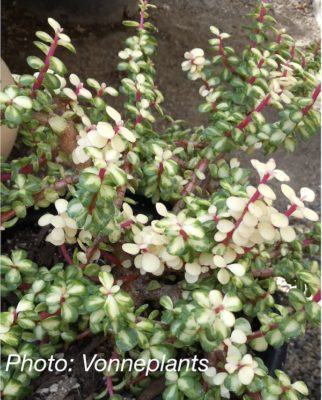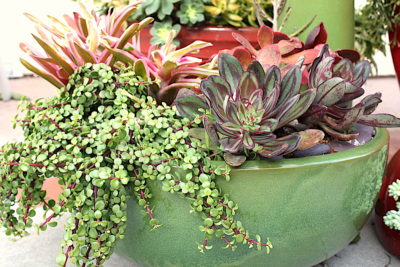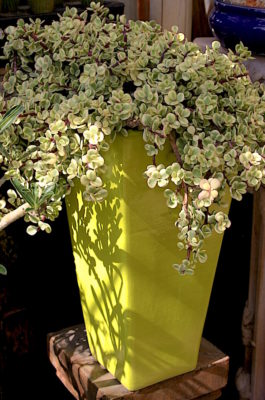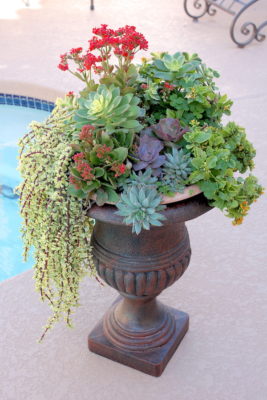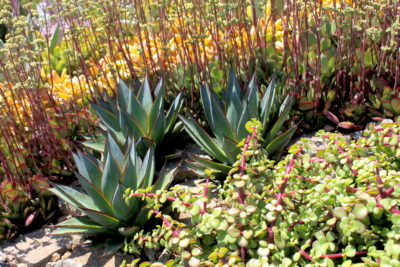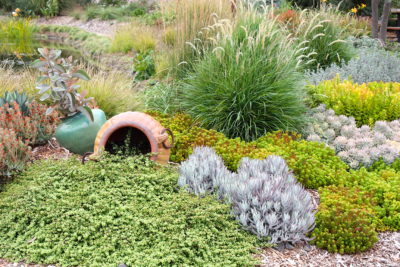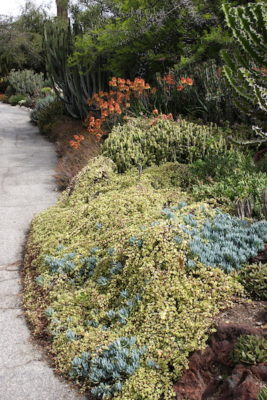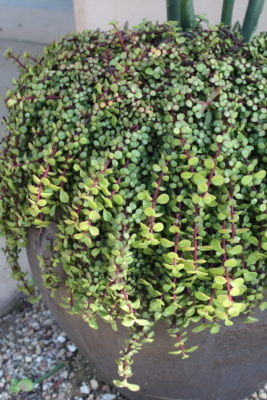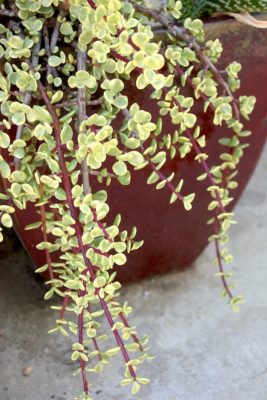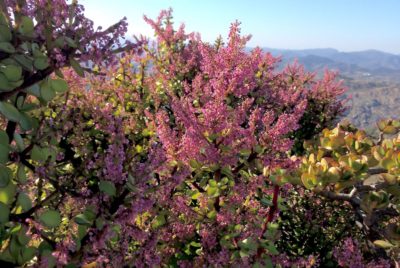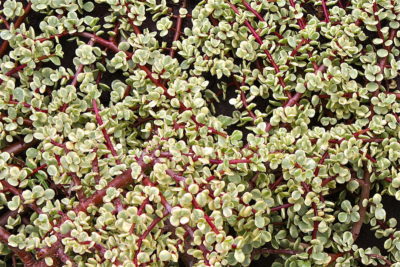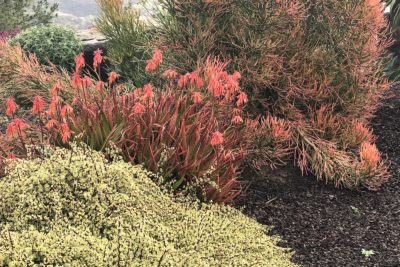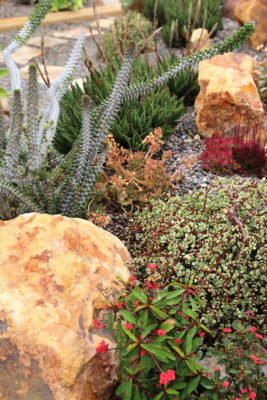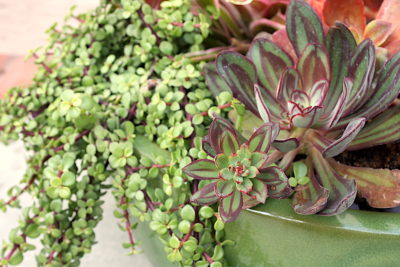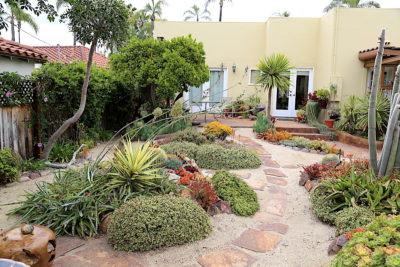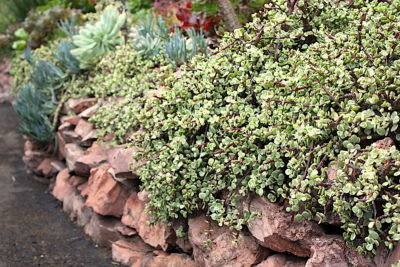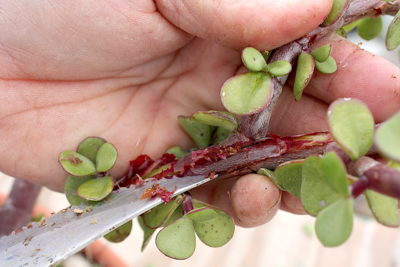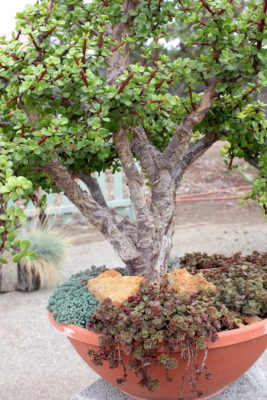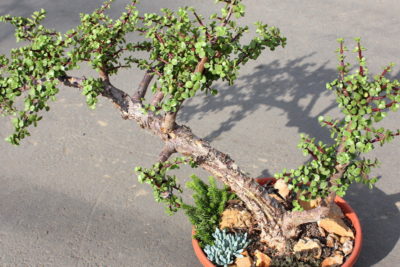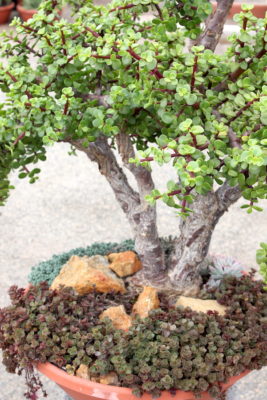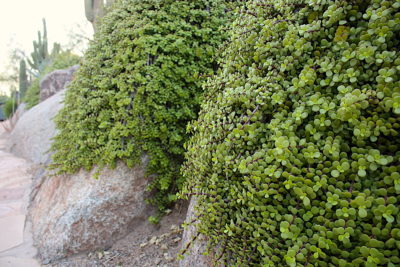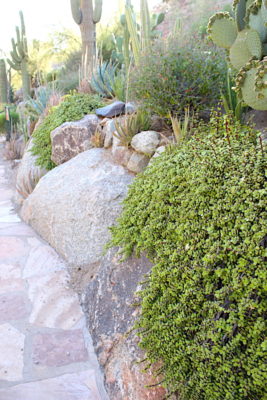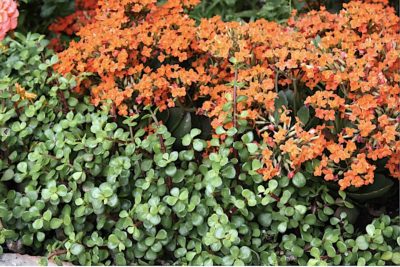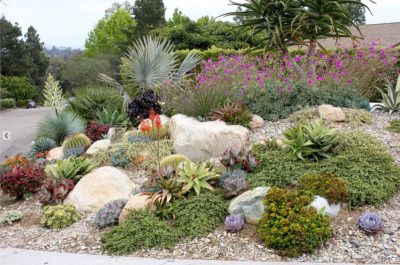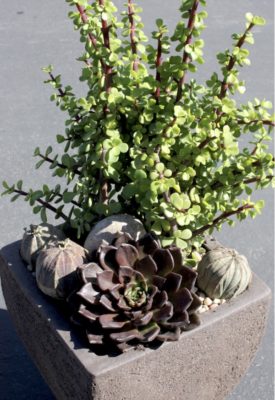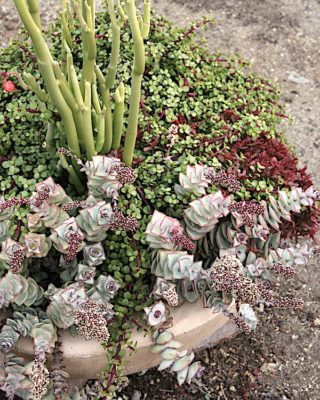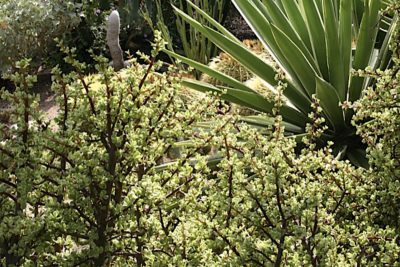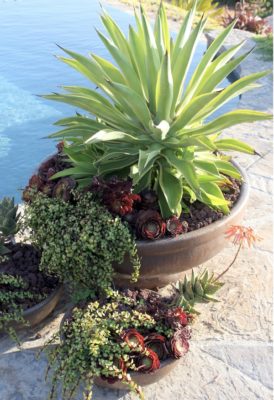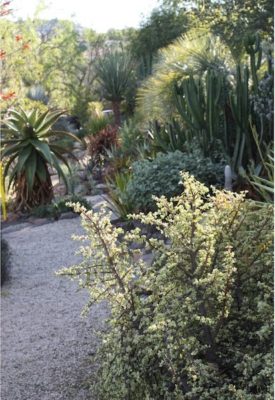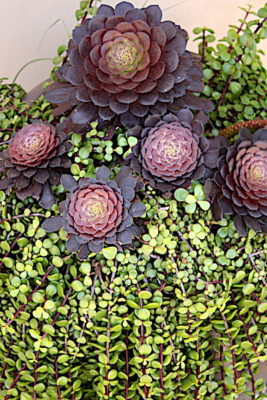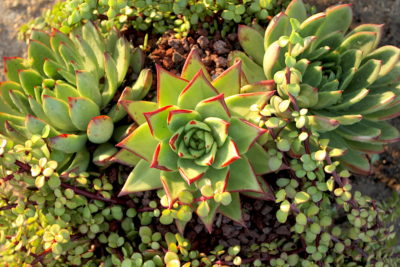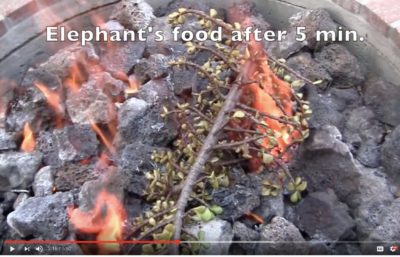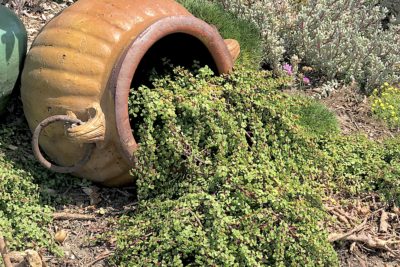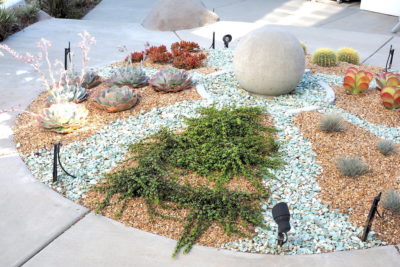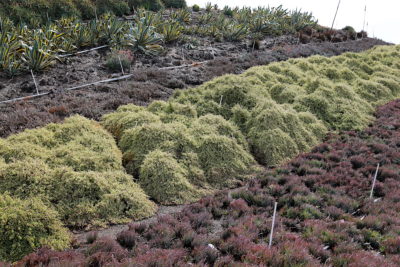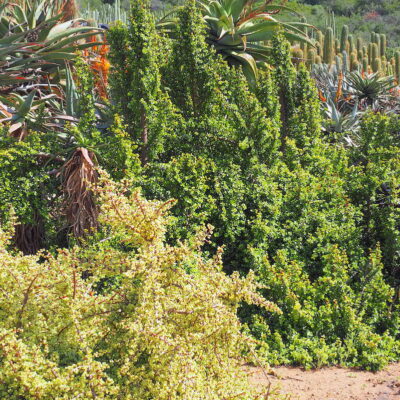About Portulacaria afra
Portulacaria afra (elephant's food, elephant bush, spekboom) thrives in warm, sunny climates. Unlike many other South African succulents, Portulacaria afra is fine with high humidity and rainfall (it grows well in Florida and Hawaii) as well as desert sun and heat. It's frost-tender, but unless severely damaged, will bounce back. Give the same care as other soft-leaved succulents as explained in my books and this site's Succulent Care Basics page.
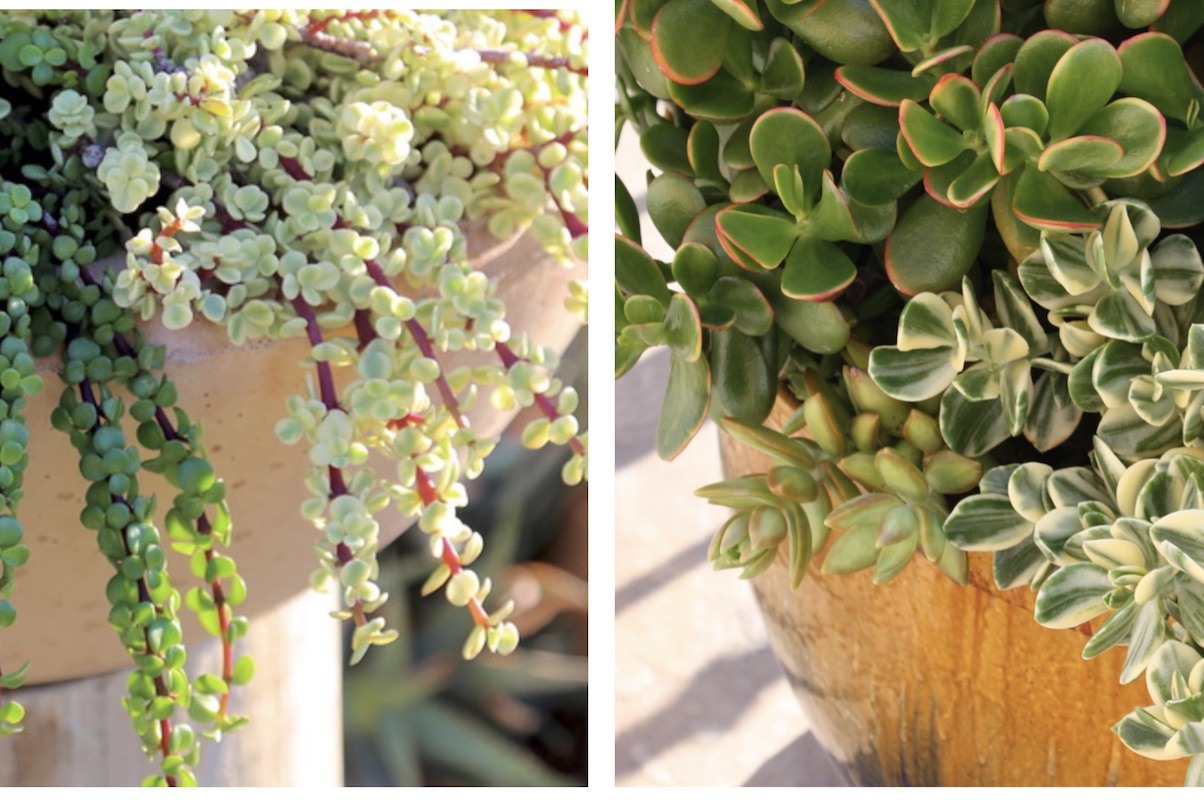
Not to be confused with jade: At left, Portulacaria afra 'Minima' and 'Variegata'; at right, two cultivars of Crassula ovata (golden jade and tricolor jade).
Environmental benefits:
Elephant's food "has enormous carbon-storing capabilities," says South Africa's Spekboom Foundation. "Its capacity to offset harmful carbon emissions is 10 times more effective per hectare at carbon fixing than any tropical rainforest.”
Learn more: How Succulents Combat Global Warming
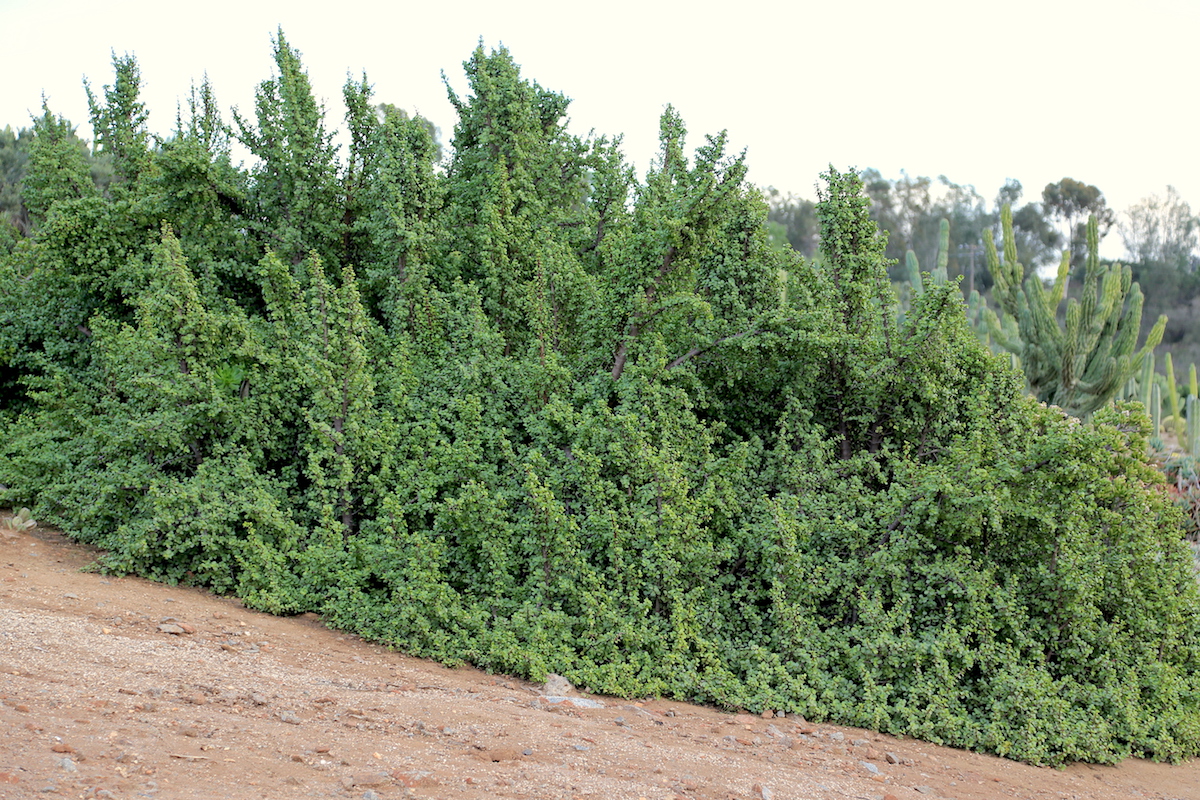
A 15-year-old stand of Portulacaria afra at Desert Theater Nursery covers about 200 square feet. It consists of multiple, overlapping plants.
In its native habitat, Portulacaria afra provides 80 percent of the diet of elephants. The resulting broken, fallen branches root readily. Although sometimes confused with jade (Crassula ovata), the two plants are quite different. Stems of portulacaria branch every which way, are red in color, and are tough and wiry. You'll need clippers to take portulacaria cuttings, but you can snap jade stems with your fingers.
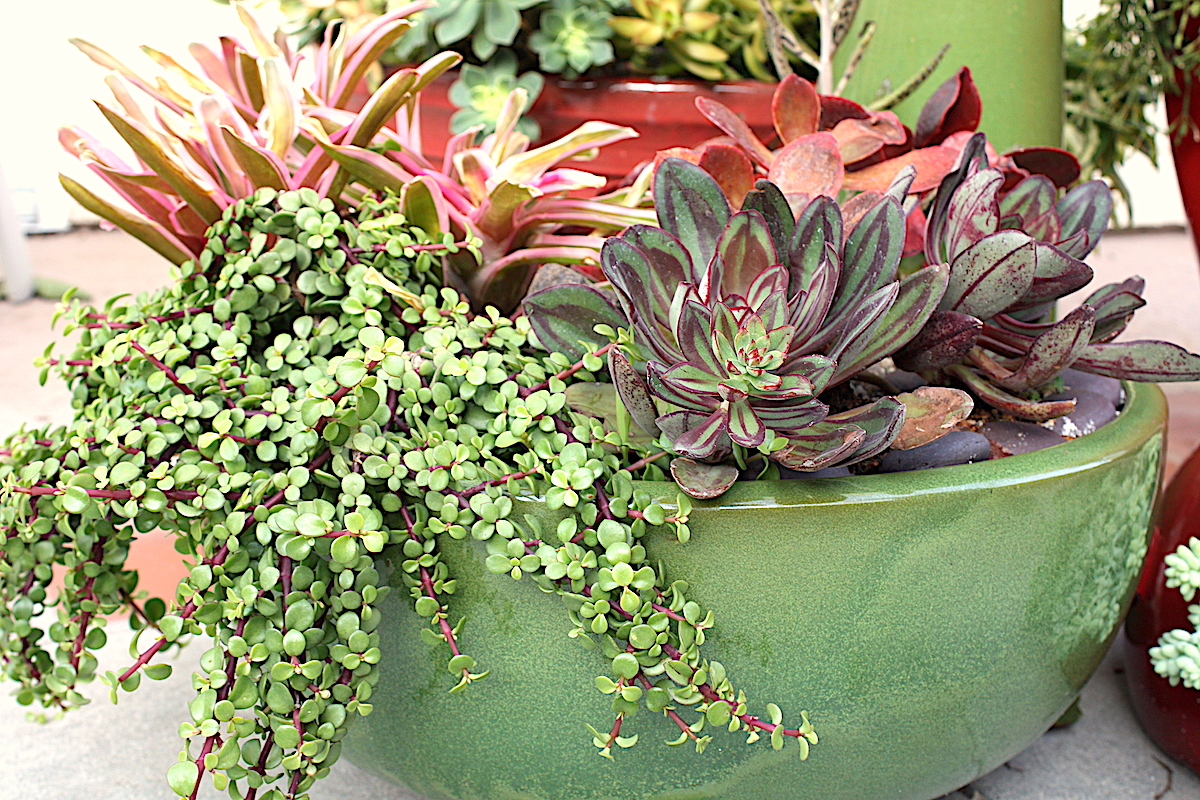
Portulacaria afra 'Minima' and Echeveria nodulosa. Design by Michael Buckner
Design tip: For striking combos, repeat the green-and-red of portulacaria in pots and adjacent plants.
Pests and problems: Nothing significant.
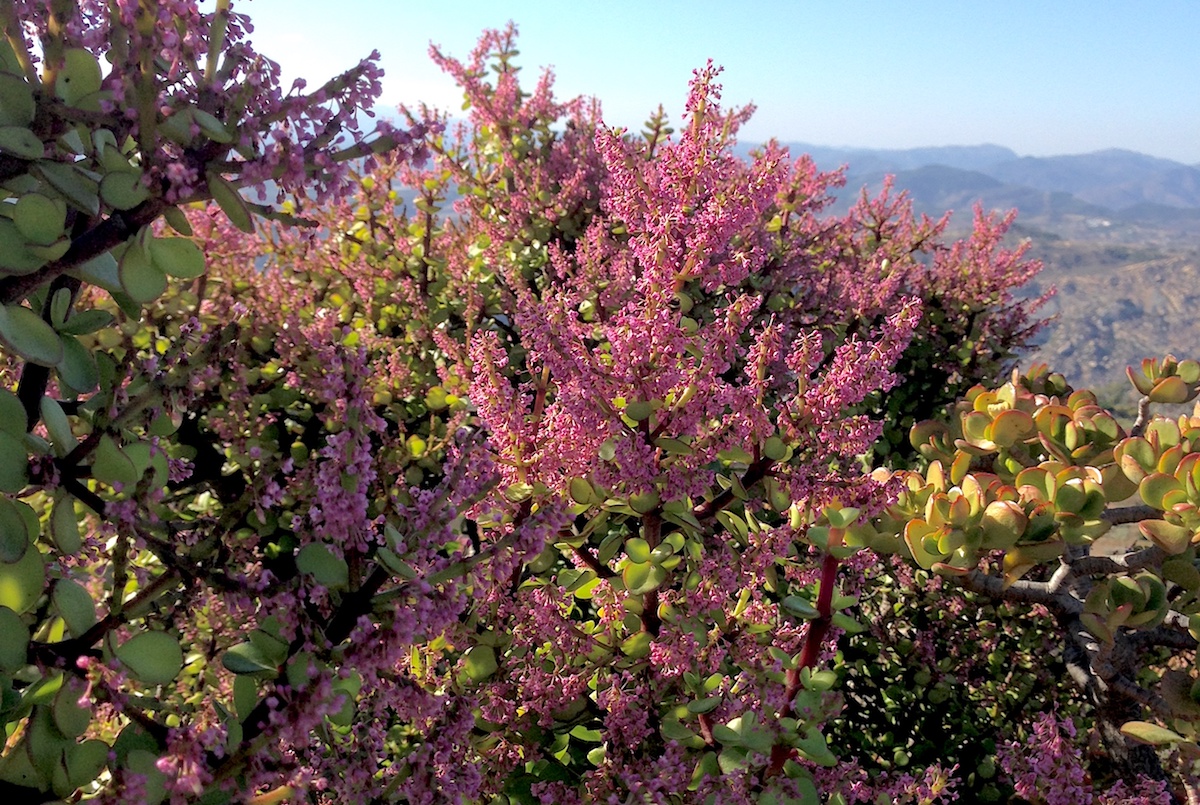
Portulacaria afra in bloom. Jade is at far right.
Flowers: If kept dry and stressed, plants produce sprays of tiny purple flowers summer into fall.

Bonsai portulacaria by Rudy Lime
Bonsai: Jade and portulacaria make good bonsai, but the latter is much easier to bend and train. Create gnarled stems by scoring with a knife.
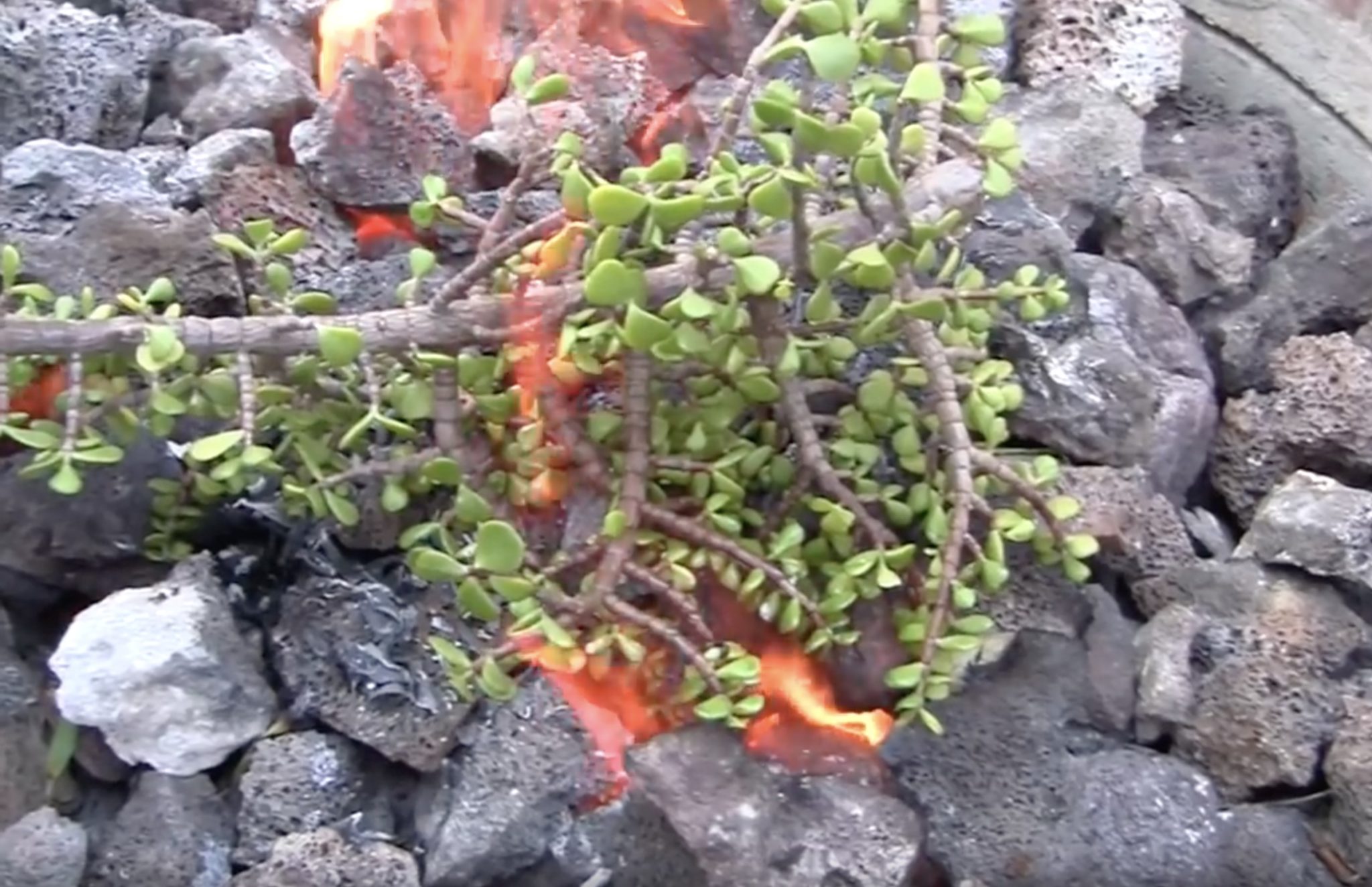
From my "Do Succulents Catch Fire?" video: Portulacaria cooked but didn't catch fire.
Firebreak: The species is used in South Africa and SoCA in fire-prone areas, planted as a perimeter hedge.

My spinach-and-tomato salad topped with feta cheese and ground pepper, dressed with balsamic vinegar and garnished with leaves of Portulacaria afra 'Minima'.
Edible: Portulacaria leaves are high in Vitamin-C, have a juicy crunch and make a nice salad garnish. They do taste sour. Eat green leaves only; those that are variegated are bitter. Try it and let me know what you think. Share your own recipe on the YouTube video! Be sure to use pesticide-free plants.
All portulacaria varieties are suitable Succulents for Coastal Southern California Gardens.
Varieties
Nurseries sometimes label portulacarias "miniature jade," but let's not encourage that. Btw, in its native South Africa, it's commonly called "spekboom."
- Portulacaria afra grows 6 to 8 feet tall and spreads indefinitely. Use it as a backdrop plant, and/or prune into a hedge.
- Portulacaria afra 'Variegata' (tricolor or rainbow elephant bush) first appeared as a sport (variant growth) of Portulacaria afra. It has cream-and-green leaves and pendant, trailing stems; and forms low, shrubby mounds that spread several feet tall and wide. Excellent for slopes, terraces, tall pots and hanging baskets.
- Portulacaria afra 'Minima' ('Prostrata', 'Decumbent', "low form" or "elephant mat"). First appeared as a sport of 'Variegata' and is smaller overall, with dainty green leaves.
- Portulacaria afra 'Aurea' is the same as 'Minima', but leaves are yellow or chartreuse.
- Portulacaria afra macrophylla (large-leaf elephant food) is less common. Waterwise Botanicals nursery gave it an elephant's mouthful of a name: "Portulacaria afra macrophylla gigantea 'Bull-ephant Bush'."
- Uncommon varieties include Portulacaria afra 'Skyscraper' which is narrow and upright; Portulacaria afra 'Cork Bark' with rough stems; and Portulacaria afra 'Medio-picta', a cream-pink-and-green variegate of 'Minima'.
Resources
Articles
These readily available plants combine to make beautiful, low-water landscapes. They're quite common and start easily from cuttings…
Online Nurseries
Southern CA
Special thanks to Waterwise Botanicals Nursery for providing many of the plants shown on this page and in the videos.
Videos
Elephant's Food (Portulacaria afra), an Easy-Care Succulent (3:50) Filmed during Debra's presentation at the 2013 Succulent Celebration
Do Succulents Catch Fire? (5:52) I compare the combustibility of six types of succulents (jade, aloe, aeonium, firesticks, elephant’s food and paddle cactus). A must-see for residents of wildfire-prone regions.
My Books
Designing with Succulents (2nd ed) pp. 226-227; Succulents Simplified, p. 241; and Succulent Container Gardens, p. 207
Portulacaria afra photo gallery
I've identified and labeled photos for you according to genus and species, and common name if available. If you think any info here or elsewhere on my site is incorrect, kindly let me know. — Debra Lee Baldwin
Related Info on this Site
How Succulents Combat Global Warming
When you grow succulents in your garden, you’re helping combat global warming. The plants are especially efficient at scrubbing carbon dioxide from the atmosphere. It has to do with

